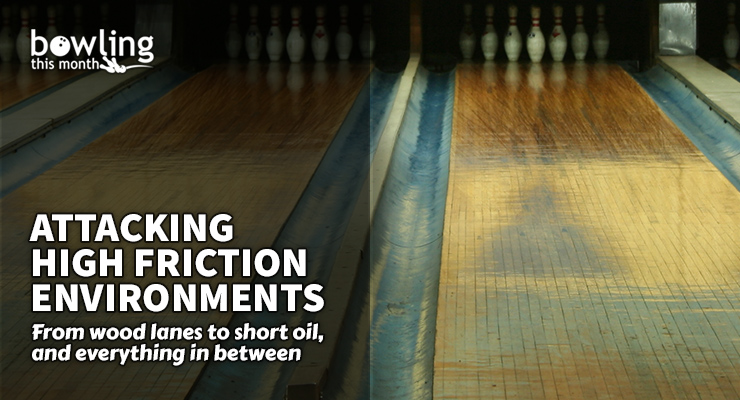What constitutes a high friction environment? Certainly 50-year-old wood lanes, no matter how well-maintained. A 33-foot pattern on brand-new synthetics would also qualify. What about the final game of an eight-game block? Yep, that also counts. And yet, every single one of these scenarios is different. Each one requires a different approach to achieve success. It’s why talking about “dry” lanes can get complicated.
It’s also important to discuss the different ways that we feel friction as bowlers. Rev-dominant bowlers will feel (and adapt to) perceived friction much differently than more speed-dominant players who play straighter angles. While there is no cookie-cutter answer due to the variables we face in bowling, this article will attempt to analyze and then simplify the various situations bowlers might find themselves in when faced with dry lanes.
The inverse relationship
It seems obvious, but it is sometimes so simple that we ignore it. The reaction characteristics of the environment dictate that you produce an opposite reaction with your delivery and equipment. For example, if the lanes aren’t hooking, you make choices to increase hook by choosing a more aggressive ball, using a rougher surface finish, or reducing your ball speed. Or all of the above. Any time we are faced with a lane play decision, coaches often talk about doing what the lane wants you to do—playing what is in front of you. But to truly understand lane play, bowlers need to understand that there is an inverse relationship between the friction of your environment and the friction you are trying to create. If you understand where the friction is, you will understand how to use it (or avoid it) to your advantage.
With that in mind, let’s look at the three basic kinds of friction that bowlers will face:
- Lane surface friction: this type of friction is caused by the lane surface itself, based on its composition and wear over time.
- Oil pattern friction: this is built into the pattern design, most notably on shorter or lower volume patterns for the purposes of this article.
- Transitional friction: this type of friction occurs as the oil is moved and removed from the lane due to balls going down the lane.
Lane surface friction
When it comes to friction, not all lanes are created equal. Before the first ball is thrown and before the oil is applied, the lanes themselves have friction characteristics. It’s the first of several reasons why the same pattern plays differently in different bowling centers. While we can’t go into the specifics of each type of lane, we’ll ...
This article is only available to Bowling This Month subscribers. Click below to get instant access to this article and all of our other premium instructional content.
Subscribe to Bowling This Month
Already a Bowling This Month subscriber? Click here to log in.
Image Credits: Bowling lanes image (©iStock.com/bukko) is licensed for use by BTM and is the copyrighted property of its original creator.
